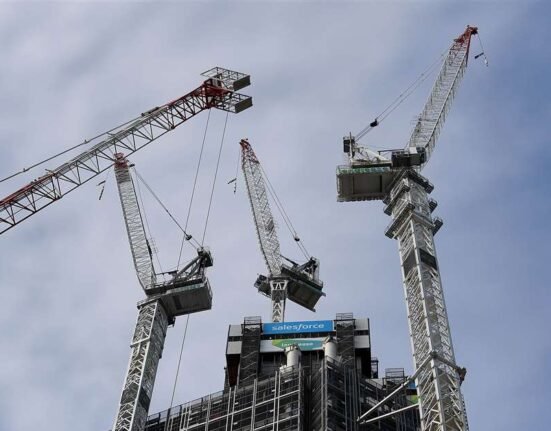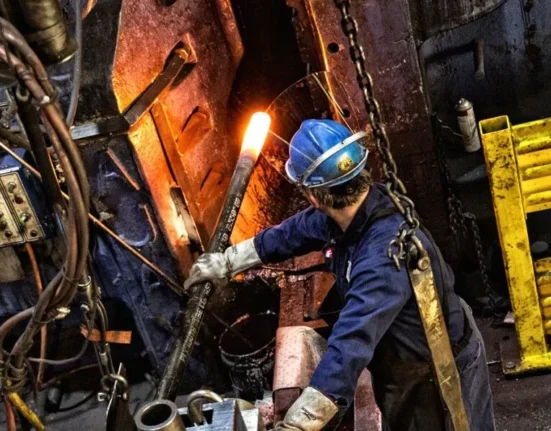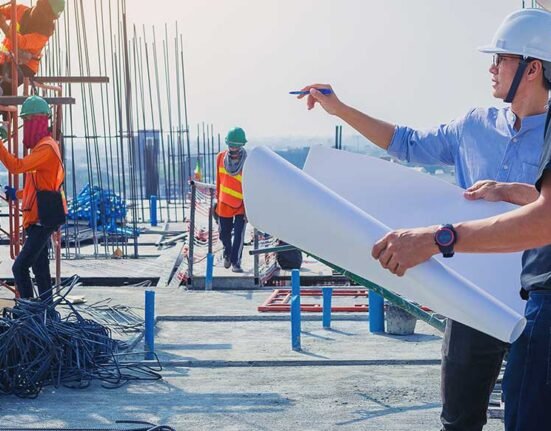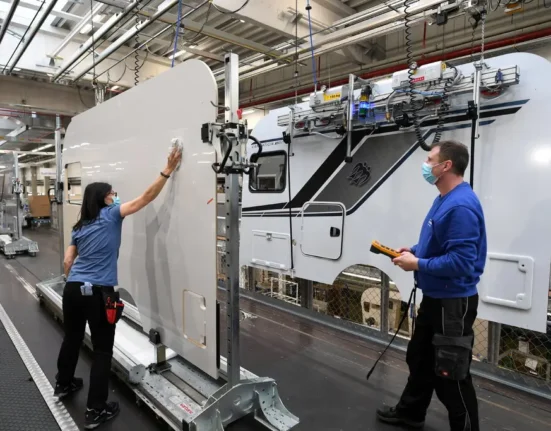In the complex landscape of construction, where precision meets practicality, estimating material costs is one of the most critical aspects of project planning. For engineers and project managers in Nigeria, a country with its unique economic and logistical challenges, mastering material cost estimation is essential for successful project execution. It is a process that demands technical expertise, market awareness, and a methodical approach. This article explores the key components of accurate material cost estimation while offering actionable insights to help Nigerian engineers navigate the intricacies of the field.
Understanding the Scope of the Project
The foundation of accurate material cost estimation lies in understanding the scope of the project. The scope acts as a blueprint, defining the boundaries of work and detailing what needs to be built, renovated, or installed. This understanding begins with a comprehensive review of the project’s design, architectural plans, and engineering specifications. For instance, constructing a multi-story office building demands a significantly different set of materials compared to a single-story residential home. Each project has unique requirements that must be clearly outlined to avoid miscalculations.
Importance of Collaboration in Scope Definition
Collaboration is key when defining the project scope. Engineers, architects, and designers must work closely to ensure every detail is accounted for. This collaboration ensures alignment between the design vision and the practical requirements of construction. Engineers, in particular, play a pivotal role in interpreting technical drawings and identifying material needs for each construction phase. By pooling expertise, the team can anticipate challenges and plan effectively, ensuring nothing is overlooked.
Accurate Interpretation of Drawings
Proper interpretation of architectural and engineering drawings is essential to avoid errors in material estimation. Overlooking details, such as the grade of steel reinforcement required for structural components or the type of cement suitable for foundation work, can lead to significant underestimations or project delays. Engineers must approach drawings with precision and a critical eye, ensuring all specifications are translated into actionable plans.
Eliminating Ambiguities in Material Lists
A thorough analysis of the project scope eliminates ambiguities, allowing engineers to create a complete and accurate material list. This process ensures that procurement aligns with project demands, minimizing waste and reducing the risk of budget overruns. By dedicating time to defining the scope, teams set a strong foundation for the project, paving the way for efficient execution and successful completion. Understanding the scope is not just a preliminary step but a critical investment in the overall success of any construction endeavor.
Staying Updated on Market Prices
In Nigeria, material prices are highly volatile, influenced by various economic factors such as fluctuating exchange rates, inflation, and rising transportation costs. Construction materials like cement, steel, and aggregates often undergo unpredictable price changes, making it challenging to maintain project budgets. To achieve accurate cost estimations, engineers must adopt a proactive approach to tracking market trends and pricing dynamics.
Keeping abreast of market prices requires consistent effort. Regular consultations with suppliers provide firsthand information about price changes and availability, while attending industry trade fairs opens up opportunities to explore new materials and pricing options. Additionally, leveraging online marketplaces and price comparison tools offers engineers real-time data on material costs, ensuring their estimates remain accurate and reflective of the current market conditions.
Benefits of Supplier Relationships
Building strong relationships with trusted suppliers is another critical strategy. Reliable suppliers often offer advantages such as negotiated discounts, bulk pricing, and prioritized delivery schedules. These benefits not only help manage costs but also minimize potential delays caused by supply chain disruptions. Establishing a network of dependable suppliers ensures that materials are sourced efficiently and economically, which is especially vital in projects with tight timelines or budgets.
The Importance of Competitive Pricing
Engaging multiple vendors for price comparisons is an effective way to secure competitive pricing. By sourcing quotes from various suppliers, engineers can identify the most cost-effective options without compromising on quality. This approach also fosters transparency in the procurement process, helping project managers make informed decisions and safeguard the budget against unexpected price hikes.
Staying Ahead of Market Fluctuations
Proactively monitoring market trends and building a robust supplier network enables engineers to stay ahead of price fluctuations. By incorporating up-to-date and realistic pricing into their cost estimates, they ensure the financial viability of their projects. This strategic approach not only mitigates the risks associated with material price volatility but also reinforces the overall success and efficiency of construction projects.
Calculating Material Quantities with Precision
Accurate material quantification forms the backbone of effective cost estimation in construction. Engineers rely on meticulous methods, such as the preparation of the Bill of Quantities (BOQ), to ensure every material requirement is accounted for. The BOQ provides a comprehensive and detailed breakdown, specifying the dimensions, quantities, and specifications for each material. For example, it might outline the exact cubic meters of concrete required for a structural slab or the precise linear meters of pipes needed for a building’s plumbing system. This level of detail ensures clarity and minimizes the risk of underestimating or overestimating material needs.
Site-Specific Assessments for Enhanced Accuracy
While the BOQ serves as a critical tool, site-specific assessments are equally important for validating and refining material calculations. Construction sites vary widely in terms of terrain, soil quality, and environmental conditions, all of which can significantly influence material requirements. For instance, a site with unstable or poor-quality soil may necessitate additional materials like lime for stabilization or geotextiles for reinforcement. Similarly, a location prone to heavy rainfall might require extra waterproofing materials to ensure structural integrity. By conducting thorough site evaluations, engineers can adapt their material estimates to reflect these unique conditions, ensuring the project’s needs are met without unnecessary overspending.
The Role of Precision in Cost Management
Precision in material quantification is essential not just for accuracy but also for effective cost management. Overestimating materials can lead to excessive waste and inflated project costs, while underestimating can cause delays and budget overruns due to unexpected procurement needs. By combining tools like the BOQ with on-site validations, engineers can strike a balance, ensuring that materials are neither wasted nor insufficient.
Adapting to Dynamic Project Requirements
Construction projects often encounter changes as they progress, whether due to design modifications or unforeseen site conditions. A precise and flexible approach to material calculation allows engineers to adapt quickly to these changes without compromising the project timeline or budget. This proactive approach reduces risks, enhances efficiency, and ensures the successful completion of the project within the allocated resources.
Accounting for Material Wastage
Material wastage is an unavoidable aspect of construction and must be carefully incorporated into cost estimations to prevent budget overruns and project delays. During procurement, transportation, and installation, materials like concrete, paint, and tiles are often subject to loss due to factors such as spillage, improper handling, or over-application. To address this, engineers include a buffer—commonly ranging from 5% to 10%—in their calculations. This contingency accounts for anticipated wastage and ensures that projects maintain steady progress without encountering material shortages.
Mitigating Wastage Through Proper Practices
While wastage is inevitable, implementing proper storage and handling practices can significantly minimize it. Materials such as cement should be stored in dry, elevated spaces to protect them from moisture, which can render them unusable. Similarly, reinforcement bars can be protected with shrink-wrap to prevent rusting due to prolonged exposure to the elements. Ensuring proper stacking and labeling of materials on-site also reduces the risk of damage or misplacement during the construction process.
The Role of Planning in Reducing Wastage
Incorporating waste reduction strategies during the planning phase can lead to more accurate and reliable cost projections. For instance, carefully calculating the exact amount of paint needed for a specific surface area or using pre-cut materials tailored to the project dimensions can significantly reduce excess material. Additionally, training workers on proper installation techniques can further decrease wastage caused by errors during application.
Balancing Contingency with Efficiency
While a buffer for wastage is necessary, it is equally important to avoid overestimating, as this can inflate project costs unnecessarily. Striking the right balance between contingency planning and efficiency ensures that the budget remains realistic without compromising on material availability. By acknowledging the potential for material wastage and proactively addressing it through careful planning, engineers can optimize resource utilization and enhance overall project efficiency.
Incorporating Transportation and Logistics Costs
Transportation and logistics are significant cost components in construction projects, particularly in Nigeria, where infrastructure challenges often escalate expenses. Engineers must factor in various variables, such as fluctuating fuel prices, vehicle maintenance, toll fees, and road conditions, to provide accurate estimates. The distance between material suppliers and the project site is another critical consideration, as longer distances typically lead to higher costs and longer delivery times. Wherever possible, sourcing materials locally not only reduces these costs but also enhances delivery efficiency, ensuring materials are readily available when needed.
Aligning Deliveries with Construction Schedules
Efficient coordination of material deliveries is essential for minimizing storage costs and mitigating risks such as damage or theft. By aligning deliveries with construction schedules, materials can arrive on-site just in time for use, eliminating the need for prolonged storage. This approach, commonly referred to as “just-in-time delivery,” enhances project efficiency by preventing delays caused by material shortages and reducing unnecessary expenses related to warehousing or safeguarding materials.
Mitigating Transportation Challenges
Addressing transportation challenges proactively can further optimize logistics costs. For instance, engineers might negotiate bulk transportation deals with logistics providers or coordinate deliveries during off-peak hours to avoid traffic delays. Properly maintaining vehicles used for material transport also minimizes the risk of breakdowns and ensures timely deliveries. Additionally, monitoring road conditions and selecting the most reliable routes can help avoid unforeseen delays and reduce wear-and-tear costs.
The Role of Planning in Cost Control
Incorporating transportation and logistics considerations into the early stages of project planning helps ensure accurate cost projections and efficient material management. By carefully assessing all variables, from sourcing locations to delivery timing, engineers can control costs while maintaining smooth project operations. Thoughtful logistics planning is not merely an operational detail but a strategic component of successful project execution.
Considering Labor and Its Impact on Material Costs
Labor efficiency is a key factor that significantly influences material utilization in construction projects. Skilled laborers bring precision to measurements and installations, minimizing the risk of errors that often lead to rework and material wastage. For example, an experienced bricklayer can reduce mortar consumption by maintaining precise alignment, while an untrained worker might waste materials through uneven application or frequent corrections. This interplay between labor proficiency and material efficiency underscores the need to account for labor quality when estimating material costs.
The Effect of Labor Delays on Material Utilization
Labor delays can have a cascading effect on material costs. Materials delivered to a site without immediate use are susceptible to damage, spoilage, or theft. For instance, cement left unused due to labor shortages may harden under poor storage conditions, while wooden components might warp if exposed to adverse weather. Engineers must factor in labor availability and productivity during project planning to ensure that material procurement aligns with workforce readiness, thereby avoiding unnecessary losses.
Collaborating with Skilled Contractors
Working with experienced contractors and supervisors is critical to maintaining high labor standards. Skilled professionals not only ensure proper handling and installation of materials but also oversee efficient resource management on-site. Their expertise minimizes errors and promotes the optimal use of materials, directly contributing to cost savings. Additionally, engaging reputable contractors can help mitigate the risk of delays caused by workforce mismanagement or insufficient training.
Synchronizing Labor and Material Procurement
Aligning labor timelines with material deliveries is essential for maintaining a seamless workflow. Proper scheduling ensures that materials are used promptly upon arrival, reducing idle time and minimizing associated storage or spoilage costs. For instance, scheduling concrete deliveries to coincide with the presence of formwork crews ensures that the material is placed and finished efficiently without wastage.
Enhancing Cost Efficiency Through Strategic Planning
Ultimately, the interplay between labor and material utilization highlights the importance of strategic planning. Engineers who account for labor efficiency, availability, and scheduling can achieve a harmonious balance between workforce management and material usage. This approach not only controls costs but also fosters a more efficient and productive construction process, leading to the successful completion of projects within budget and on time.
Exploring Sustainable and Alternative Materials
Sustainability is reshaping the construction industry, with increasing emphasis on using materials that minimize environmental impact while maintaining functionality and cost-efficiency. Green building materials such as bamboo, fly ash, and recycled steel are gaining traction for their eco-friendly properties. Although these materials may come with higher initial costs, they often deliver long-term financial benefits. Their durability, energy efficiency, and low maintenance requirements contribute to significant savings over the lifecycle of a project, making them a viable option for modern construction.
The Cost and Environmental Benefits of Sustainable Materials
Bamboo, for instance, is a renewable resource that grows quickly and offers exceptional tensile strength, making it an effective substitute for traditional timber or even steel in some cases. Fly ash, a byproduct of coal combustion, can replace cement in concrete mixtures, reducing carbon emissions while enhancing the strength and workability of concrete. Recycled steel not only conserves natural resources but also reduces energy consumption compared to producing new steel. These alternatives represent a shift toward responsible construction practices that balance performance with environmental stewardship.
Leveraging Locally Sourced Materials
Incorporating locally sourced materials is another sustainable strategy with multiple advantages. Locally produced materials reduce transportation distances, cutting costs and emissions associated with logistics. Moreover, this approach supports regional economies by creating demand for local industries and labor. For instance, using locally quarried stone or bricks can significantly lower transportation expenses while ensuring materials are suited to the area’s climate and conditions.
Aligning with Global Best Practices
Engineers who integrate sustainable and alternative materials into their projects demonstrate innovation and a commitment to global best practices. This forward-thinking approach not only addresses environmental concerns but also aligns with industry trends favoring green certifications and standards such as LEED (Leadership in Energy and Environmental Design). Projects that prioritize sustainability often attract stakeholders who value environmentally conscious construction, further enhancing the project’s reputation and market appeal.
Balancing Innovation with Practicality
While adopting sustainable materials requires careful consideration of costs and availability, the long-term advantages often outweigh the challenges. Engineers must weigh factors such as local market conditions, material performance, and project specifications when selecting alternatives. By embracing sustainable construction practices, they contribute to a greener future while enhancing project efficiency and cost-effectiveness.
Allocating Contingencies for Unforeseen Circumstances
Uncertainty is an inherent aspect of construction projects, stemming from factors such as sudden price hikes, supply chain disruptions, or unexpected design modifications. To address these challenges, a robust cost estimate includes a contingency allowance, typically ranging from 5% to 15% of the total material cost. This financial buffer ensures that the project can absorb unexpected expenses without derailing timelines, compromising quality, or requiring extensive budget adjustments.
By proactively planning for contingencies, engineers and project managers can mitigate risks and maintain smoother workflows. For example, a sudden increase in the cost of cement or steel might otherwise stall construction activities, but a well-allocated contingency fund allows the team to adapt quickly. Incorporating this safety net into the initial cost estimation underscores a proactive approach to project management, fostering confidence among stakeholders and ensuring financial stability throughout the project lifecycle.
Leveraging Technology for Accurate Estimation
The advent of modern technology has transformed material cost estimation, making it more efficient, accurate, and reliable. Software tools like Autodesk Quantity Takeoff, CostX, and Trimble Estimation automate complex calculations, integrate real-time pricing data, and generate detailed reports tailored to project requirements. These advanced solutions streamline the estimation process, significantly reducing human errors that often arise from manual calculations.
One of the key advantages of using such tools is their ability to provide dynamic updates. For instance, if a material specification or design detail changes, these platforms can instantly recalculate costs, enabling engineers to make timely and informed decisions. Real-time pricing integration also ensures that estimates remain current, accounting for market fluctuations that could otherwise impact project budgets.
Moreover, these tools offer visualization capabilities, allowing engineers to better understand material requirements through detailed models and breakdowns. This enhances collaboration among project teams, as stakeholders can easily review and approve estimates with confidence. By adopting technology-driven estimation practices, engineers not only save time but also gain actionable insights that support strategic decision-making, ultimately driving project success.
Combining Contingencies and Technology for Resilience
The combination of contingency planning and technology adoption represents a best-practice approach to material cost estimation. While contingencies provide a financial cushion for the unexpected, technology equips engineers with the tools needed to anticipate and adapt to changes more effectively. Together, they form a comprehensive strategy for managing costs, minimizing risks, and delivering projects on time and within budget. This integrated approach underscores the evolving nature of the construction industry, where innovation and preparation go hand in hand to achieve excellence.
Conclusion
Estimating material costs for a large construction project requires a blend of technical expertise, market awareness, and strategic planning. By understanding the project scope, staying updated on market prices, quantifying materials accurately, and accounting for contingencies, Nigerian engineers can deliver projects on time and within budget. Leveraging sustainable practices and modern tools further elevates the quality of work, ensuring alignment with global standards.
If you’re ready to take your engineering career or project management skills to the next level, join EPCI.ng today. Gain access to cutting-edge tools, expert insights, and a community of professionals shaping the future of construction and engineering in Nigeria. Subscribe now and stay ahead in the ever-evolving world of EPCI.







Leave feedback about this